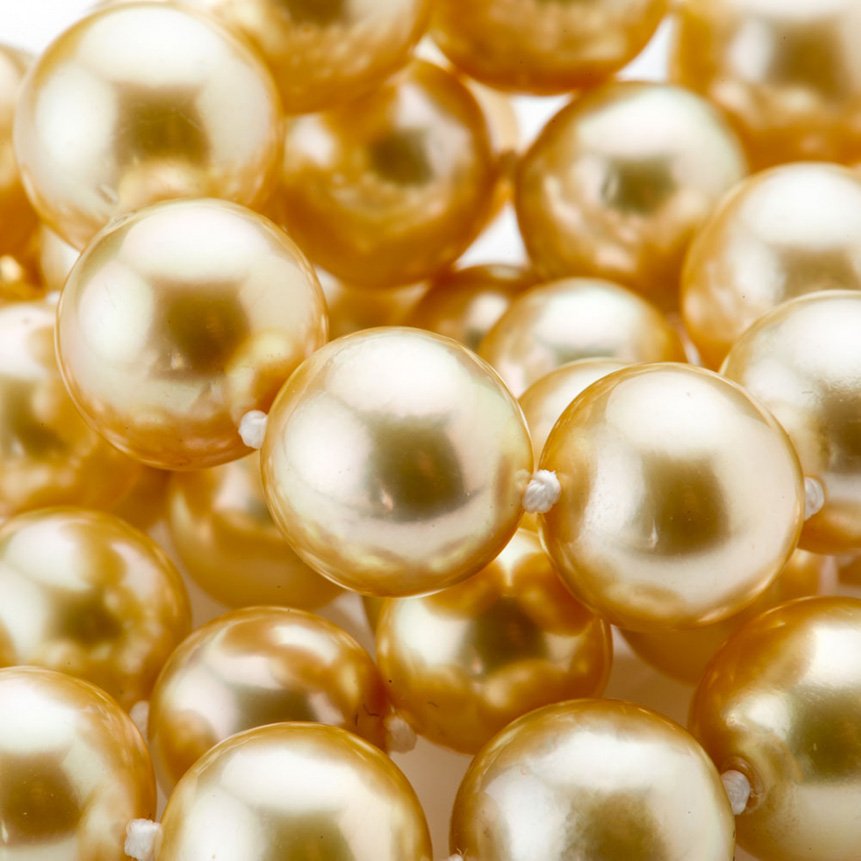What determines the value of a pearl?
What determines the value of a pearl?
All pearls are valued according to a standard set out by the GIA(Gemological Institute of America) which it developed over a 60-year period of pearl research. The GIA, established in 1931, is considered worldwide as the leading authority in gemmology. The GIA 7 Pearl Value Factors™ provide a way to evaluate all pearls based on Size, Shape, Color, Nacre, Lustre, Surface, and Matching as described here:

Pearl Size
Larger pearls are rarer and generally more valuable than smaller pearls of the same type so long as the other factors determining value are good.

Pearl Shape
Round is the most difficult shape to culture, making it the rarest cultured pearl shape and also generally the most valuable. Although a well-formed pear, oval, or baroque (irregularly shaped) cultured pearl can also have a high value as they are also prized by pearl lovers.
Pearl Colour
Pearls occur in a wide variety of colours both in nature and in cultured pearls. There are warm hues such as yellow, oranges and pink, cool hues such as blue, green, violet and even black. The colour varies dependant on the type of mollusk which has produced the pearl, and can even be affected by water conditions of the source and type of nutrients in the water and from which part of the world the mollusk grows. Pearls have a wide range of tone from light to dark; all tend to be softly muted, with a subtle quality.
Pearls usually exhibit a dominant overall body colour and can also possess an overtone colour with translucent qualities. The body colours can be found in white, silver, cream, yellow (golden), grey, or black, while overtones may be rose, greenish, blueish, or a gentle violet. Pearls can also display an iridescence referred to as an orient observed as a shimmer of rainbow colours on or just below the surface of the pearl.
At times certain colour types can be more popular, if this corresponds with a low supply of that colour type it can affect prices. Pearls are a natural phenomenon produced by a living creature and supply can fluctuate affected by any number of factors.

Pearl Lustre
Of all seven of the GIA pearl valuing factors, lustre could be most important, lustre gives a natural or cultured pearl its unique beauty and is a measure of how reflections appear on the pearl’s surface. In a pearl which displays an ‘excellent lustre‘ it is possible to observe reflections appearing brightly and sharply on the surface, whereas these would be dim and diffused in a poor specimen. The higher the lustre the more valuable the pearl so long as the other GIA factors are also good.
Pearl Surface quality:
A perfect pearl is an extremely rare thing. Some pearls scoring highly in all other factors may show abrasions that look like a series of scratches on the surface, or have a flattened section that doesn’t affect its basic shape, or possess a slight crease or wrinkle. Surface characteristics like these can affect the durability of the pearl and inevitably its value. These may have less effect on the pearl’s beauty and value if they are few in number, or could be hidden by a drill-hole or mounting.
Pearl Nacre quality
Lustre and nacre quality are closely linked. If the nacre (also known as mother of pearl) is thin the pearl may show as a dull, chalky specimen. This also affects the lustre and the overall durability of the pearl.
Pearl Matching
Jewellery designers sometimes deliberately mix colours, shapes, and sizes for unique effects, but for most pearl rows,
earrings, or other multiple-pearl jewellery, the pearls should match in all the quality factors.
Gorgeous Pearls at Heidi Kjeldsen Jewellers
When buying pearls to create jewellery designs in our Mill Street, Oakham showroom and jewellery workshop we ensure that pearls which score highly in all of the above criteria are purchased.
